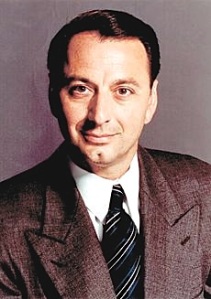Sustainability is an enabler of innovation and should be at the core of the design of products and services and the development of new business models – World Economic Forum, Sustainable Consumption http://ping.fm/RZlJH
Categories
- A-POC
- Accessories
- Advertising
- Apparel
- Apple
- Architecture
- Armani
- Art Installation
- Athletes
- Automobiles
- Bespoke
- Bicycles
- Blogroll
- BMW
- Bottled Water
- Brands
- Camera Phones
- Celebrity
- cell phones
- Computers
- Cool
- Couture
- Creativity
- Customers
- Cyber Space
- Dance
- David Michalek
- Design
- Diamonds
- Digital Cameras
- Digital Downtown
- Donna Karan
- E-commerce
- Eco-Friendly
- Fashion
- Fashion Design
- Film
- Fine Art
- Future Cars
- GenArt
- Golf
- Green
- Handbags
- Honda
- Hussein Chalayan
- Hybrid
- Innovation
- Innovative
- Innovative Wellness
- Internet
- iPhone
- iPhone 3G
- Issey Miyake
- Jewels
- Laptops
- Luxury
- Menswear
- mobile phones
- Modernism
- Natalia
- Natalia Allen
- Performance Gear
- Peugeot
- politics
- Prius
- Samsung
- Shopping
- Simon Collins
- SmartBike DC
- Social Networks
- Speedo
- Sustainability
- Tadao Ando
- Technology
- Textiles
- The Future of Fashion
- Toyota
- Transportation
- Travel
- Uncategorized
- Velib
- Water
- Workshop
Recent Comments
Kurt M. Meyers on Fashion and Capitol Hill Kurt M. Meyers on Fashion and Capitol Hill NATALIA on Dangerous Chemicals In Your… Francis Oliverio on Dangerous Chemicals In Your… Sakira Hadley on designfuturist.com is now… -
Recent Posts
Archives
- June 2010
- May 2010
- April 2010
- March 2010
- February 2010
- January 2010
- December 2009
- October 2009
- September 2009
- May 2009
- February 2009
- January 2009
- December 2008
- November 2008
- August 2008
- July 2008
- June 2008
- May 2008
- April 2008
- March 2008
- February 2008
- January 2008
- December 2007
- November 2007
- October 2007
- September 2007
Calendar
May 2024 S M T W T F S 1 2 3 4 5 6 7 8 9 10 11 12 13 14 15 16 17 18 19 20 21 22 23 24 25 26 27 28 29 30 31


 NEW YORK, NY – February 25, 2009 – Natalia Allen received an honor, bestowed each year by the World Economic Forum. The Forum recognizes and acknowledges between 200 and 300 outstanding young leaders from around the world for their professional accomplishments, commitment to society and potential to contribute to shaping the future of the world.
NEW YORK, NY – February 25, 2009 – Natalia Allen received an honor, bestowed each year by the World Economic Forum. The Forum recognizes and acknowledges between 200 and 300 outstanding young leaders from around the world for their professional accomplishments, commitment to society and potential to contribute to shaping the future of the world.








